Creating a Solana NFT Collection and mint NFT with the Mirror World Smart SDK
An NFT Collection is made up of a variety of several unique NFTs. Usually, NFT collections may consist of various NFTs that share some similar characteristics with slight variations across each individual token. For GameFi, NFTs are important assets for players, which allows players to actually own the assets and help the project achieve co-creation. For SocialFi, NFTs can be used as status symbols or rewards to be given to social users.
Whatever it is, creating your own NFT collection is a big step in your NFT journey. In this guide, we're going to learn how to create NFT Collections on Solana with the Mirror World SDK.
💡 Why do you need an NFT collection?
NFT collection is the classification of digital assets and is usually used to manage different series of NFTs. For example, for GameFi, weapons can be divided into different NFT collections depending on their rarity, and each NFT collection maintains a separate floor price.
Getting Started
To create an NFT collection, make sure you already have a Mirror World developer account. A developer account grants you access to numerous features that can help you build on Mirror World and it can be created within seconds. If you do not yet have an account, head over to https://app.mirrorworld.fun/auth/login to get started. You'll be redirected to the Mirror World dashboard after successfully signing up.
Create a Project
Creating a project is a necessary step in your NFT collection creation process. A project is the foundation for developing with Mirror World. Every project is created with three major credentials:
- API Key: Used to authorize a client to access the Mirror World API.
- Client ID: Used to publicly identify your project.
- Client Secret: Sensitive credential that the project owner/developer will use to verify certain claims about their project on our Authentication services.
These credentials can be found on the Mirror World developer dashboard within the project.
Create your NFT collection
- Create from dashboard
Using the developer dashboard is the fastest and easiest way to get started creating your NFT collection. Select the project you want to build and click on the “NFT Collection” tab.
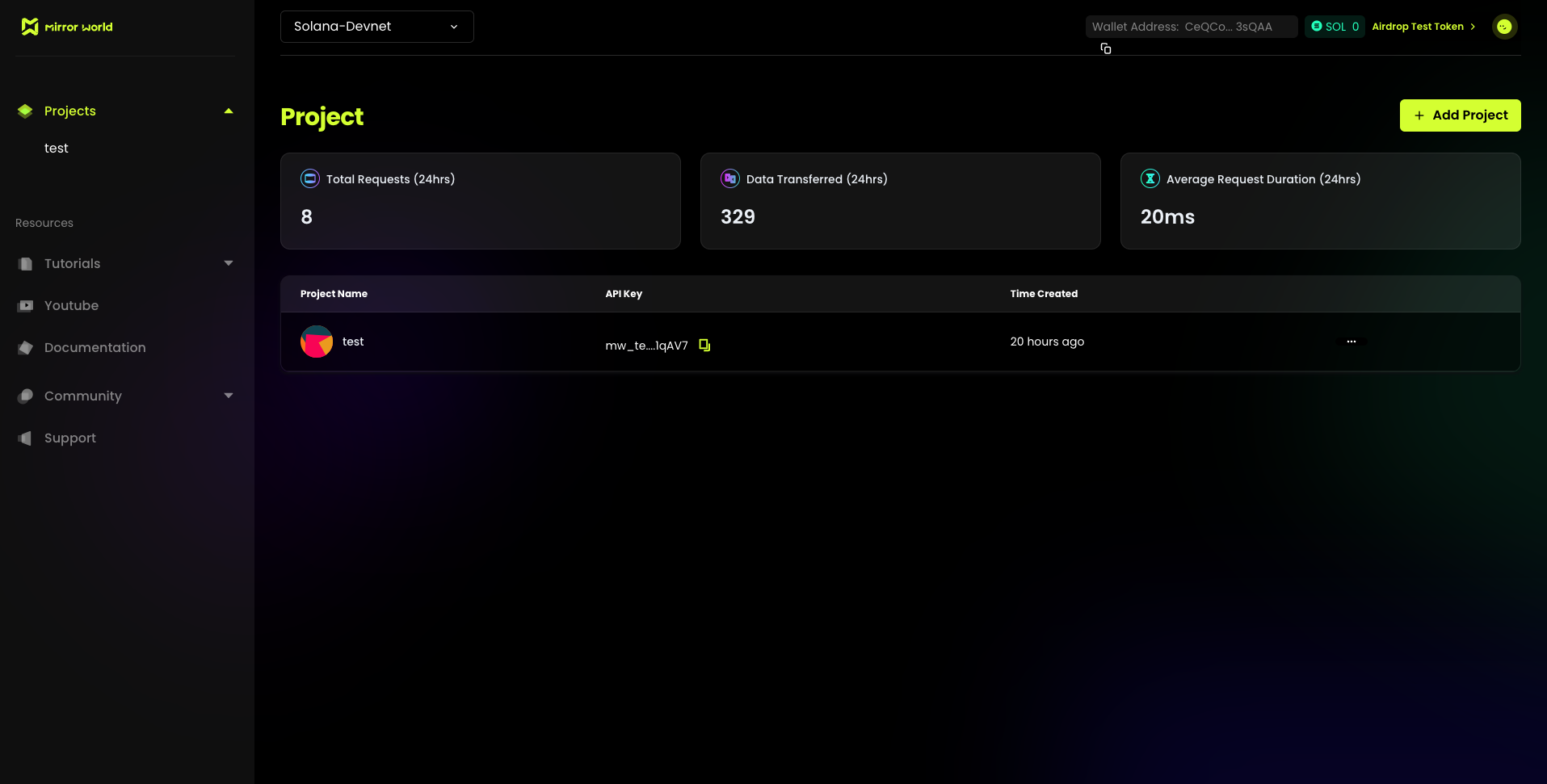 | 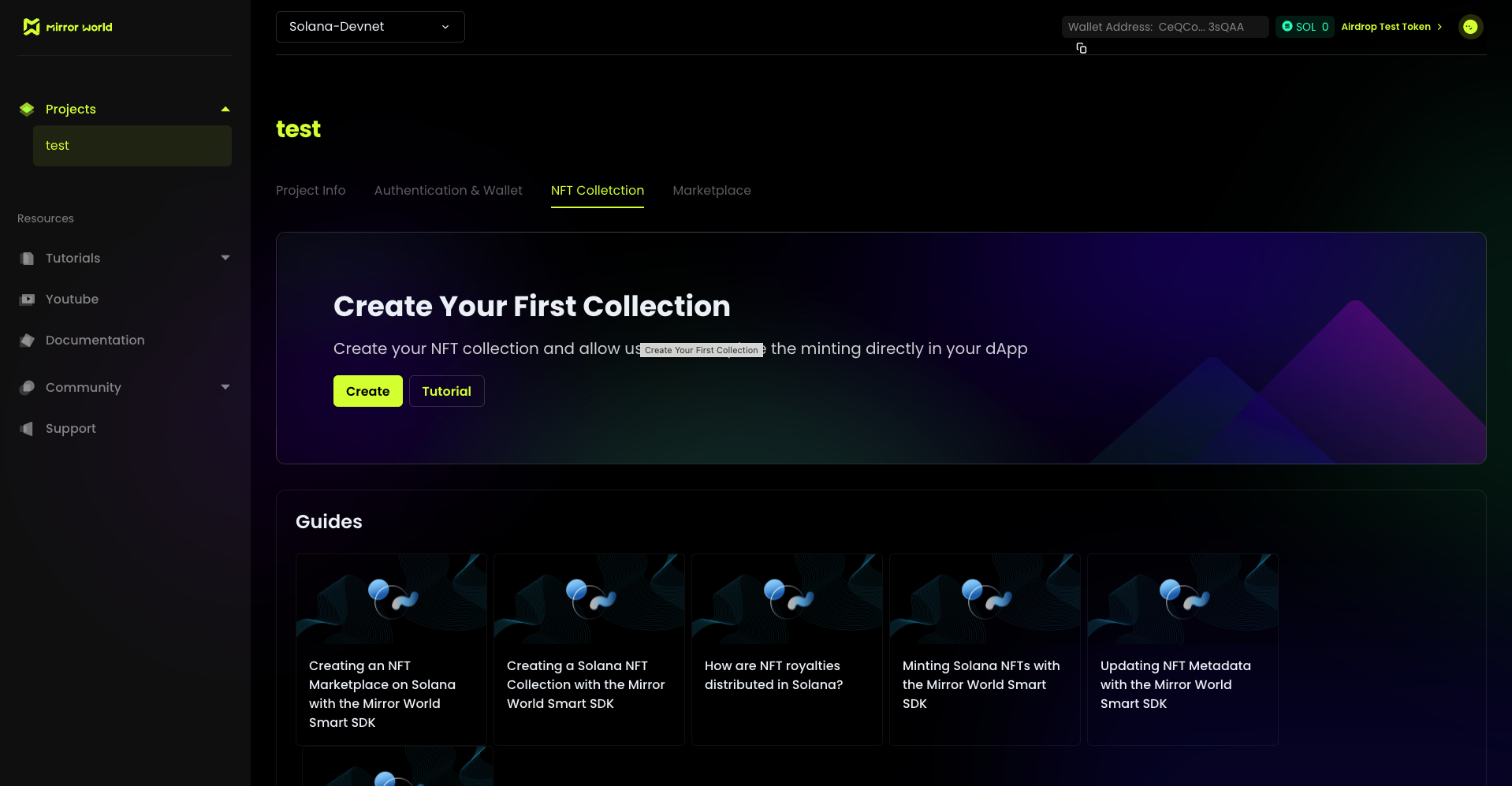 |
|---|
You'll be redirected to the Collections page. Click on the "Create" button to create a new collection. You'll be redirected to a pop-up page asking you for more information about your collection. Please make sure to fill in every field with the appropriate information. Modifying will require additional gas fees. Creating a collection requires 0.01-0.02 SOL.
💡 Tip:
- If you are building your collection on Devnet and don't have enough test tokens, you can click “Airdrop Test Token” to get some test SOL in your account.
- If you are building your collection on Mainnet and don't have enough tokens, you can click “Buy SOL” to purchase tokens to your account or transfer them from your funding wallet.
You will need to provide the following information:
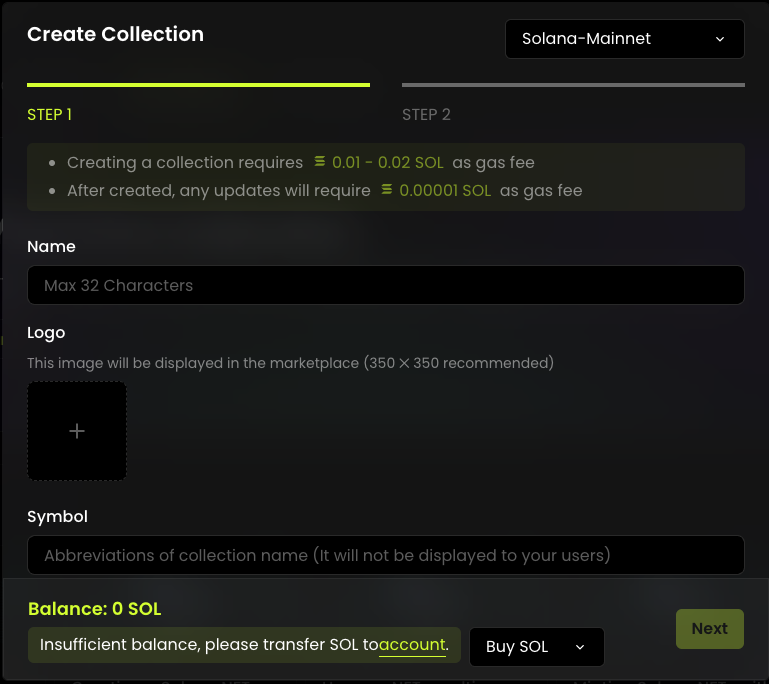 | 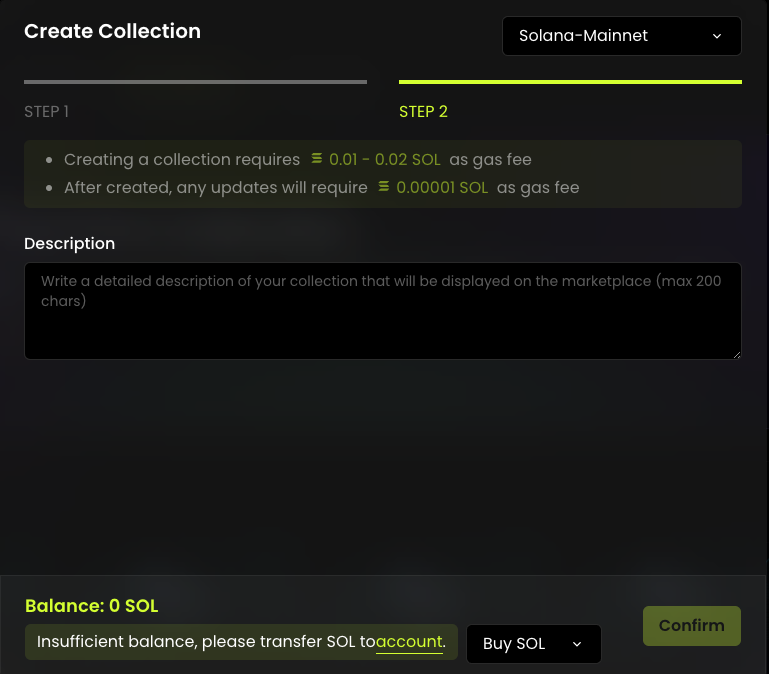 |
|---|
- Create using the Mirror World API
There's also the option to use our API in creating your collection. All you need
to do is call the createVerifiedCollection method:
As you can see, from its name, createVerifiedCollection helps you create a
verified NFT collection. Verified collections help others know that the NFTs
come from an authentic source. This is necessary especially if you intend to
make money off of your NFTs as collectors tend to only buy from collections that
are verified.
The Mirror World API helps in simplifying the verification process significantly as seen in the code below:
Example.tsx:
const collection = await mirrorworld.createVerifiedCollection({ name: "COLLECTION_NAME", symbol: "COLLECTION_SYMBOL", metadataUri: "https://metadata-assets.mirrorworld.fun/sdk/metadata_json/mirror_sdk.json",})// Returns `IVerifiedCollection`export interface IVerifiedCollection { mint_address: string url: string update_authority: string creator_address: string name: string symbol: string collection?: null signature: string status: string}
Remember, you need to have set up a project and configured your app to use its API keys before you can successfully call this and other methods.
Mint your first NFT
Congratulations! You already know how to create your NFT collection. Let's try to mint an NFT into that collection.
- Mint NFT from dashboard After you create the NFT collection, click “Mint NFT”
button and provide your NFT metadata Json URL. Mint an NFT requires 0.01-0.02
SOL. -
How to prepare my NFT metadata
]
💡 Demo NFT Json URL: https://metadata-assets.mirrorworld.fun/sdk/metadata_json/mirror_sdk.json
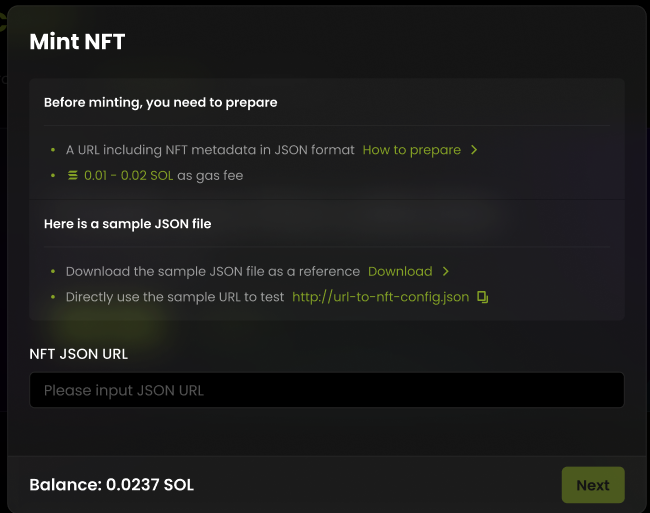
- Mint NFT by using the Mirror World API You can check our HTTP API document for more detail. https://developer.mirrorworld.fun/#4fb51141-d65b-4c24-a256-b3f065fdb261
After successfully minting your NFTs, you can view them at https://explorer.solana.com/. Or you can check through our Dashboard by clicking “Account” and clicking “Wallet”, you will also be directed to your wallet address page on the Solana Explorer. Click on the “Tokens” tab to see your NFTs.
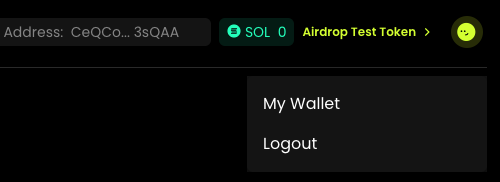 | 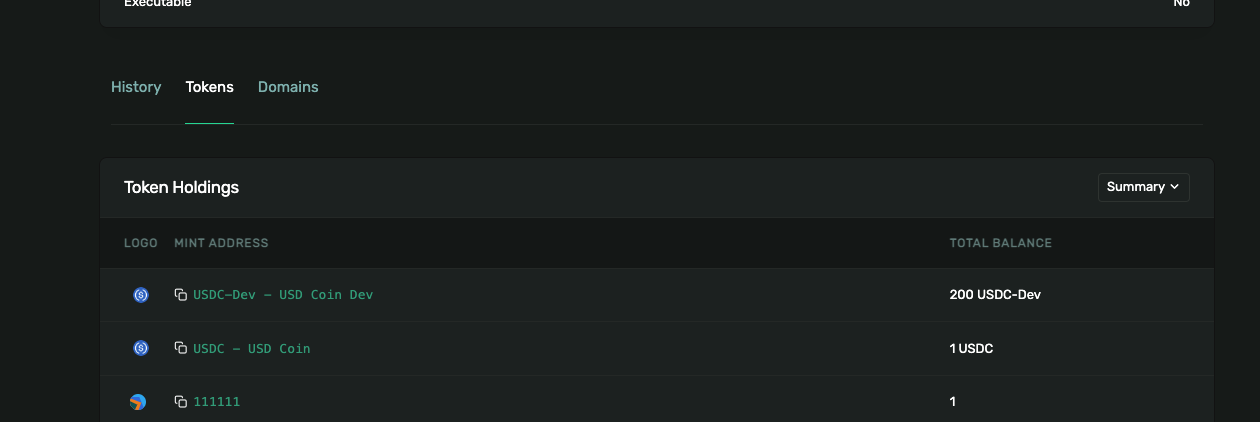 |
|---|
Where to go from here
The Mirror World SDK spans multiple frameworks and aims to help developers seamlessly build Web 3 infrastructure rapidly and effectively for mobile and the web. The developer dashboard greatly improves this experience with its simple and easy-to-navigate interface. Your journey doesn't have to end at creating collections. Check out this guide to learn how to mint NFTs to your collection, how to create an NFT marketplace and a list of Marketplace transactions you can perform with the Mirror World Smart SDK
Edit this page on GitHub